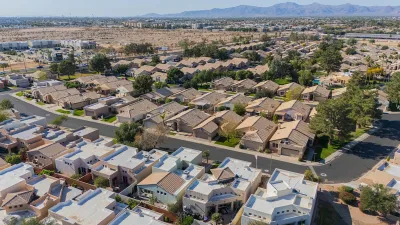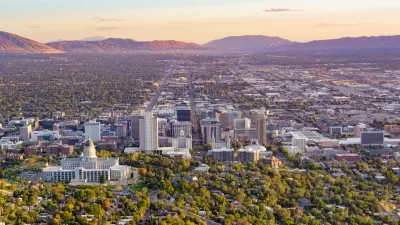The agency will identify federally owned parcels appropriate for housing development and streamline the regulatory process to lease or transfer land to housing authorities and nonprofit developers.

The Department of Housing and Urban Development (HUD) and the Department of the Interior announced plans to build housing on federal lands to address the housing crisis, reports Rebecca Picciotto in The Wall Street Journal. “The two secretaries also vowed to streamline the regulatory process so building on a federal lands doesn’t get held up with environmental reviews, transfer protocols and other priorities, according to the announcement.”
However, just 7.3 percent of federal lands fall within major metro areas, where the housing crisis is most acutely felt. The action would have little impact in cities like New York, where just 3.4 percent of land is federally owned, but could significantly increase housing supply in states like Nevada and Utah.
The proposal faces some unique challenges. “In some areas, the surrounding infrastructure and zoning laws would have to allow for home building, or be changed to do so. President Trump’s plan would also contend with logistical and environmental challenges.” Some federal lands are in remote or sensitive areas that would be damaged by new infrastructure, which would also raise the cost of construction.
According to HUD, lands identified as appropriate for development would be leased or transferred to public housing authorities, nonprofits, or local governments. But the agency also left open the possibility it could “occasionally” be sold to private developers.
FULL STORY: Trump Wants to Build Homes on Federal Land. Here’s What That Would Look Like.

Study: Maui’s Plan to Convert Vacation Rentals to Long-Term Housing Could Cause Nearly $1 Billion Economic Loss
The plan would reduce visitor accommodation by 25,% resulting in 1,900 jobs lost.

North Texas Transit Leaders Tout Benefits of TOD for Growing Region
At a summit focused on transit-oriented development, policymakers discussed how North Texas’ expanded light rail system can serve as a tool for economic growth.

Why Should We Subsidize Public Transportation?
Many public transit agencies face financial stress due to rising costs, declining fare revenue, and declining subsidies. Transit advocates must provide a strong business case for increasing public transit funding.

How to Make US Trains Faster
Changes to boarding platforms and a switch to electric trains could improve U.S. passenger rail service without the added cost of high-speed rail.

Columbia’s Revitalized ‘Loop’ Is a Hub for Local Entrepreneurs
A focus on small businesses is helping a commercial corridor in Columbia, Missouri thrive.

Invasive Insect Threatens Minnesota’s Ash Forests
The Emerald Ash Borer is a rapidly spreading invasive pest threatening Minnesota’s ash trees, and homeowners are encouraged to plant diverse replacement species, avoid moving ash firewood, and monitor for signs of infestation.
Urban Design for Planners 1: Software Tools
This six-course series explores essential urban design concepts using open source software and equips planners with the tools they need to participate fully in the urban design process.
Planning for Universal Design
Learn the tools for implementing Universal Design in planning regulations.
City of Santa Clarita
Ascent Environmental
Institute for Housing and Urban Development Studies (IHS)
City of Grandview
Harvard GSD Executive Education
Toledo-Lucas County Plan Commissions
Salt Lake City
NYU Wagner Graduate School of Public Service





























